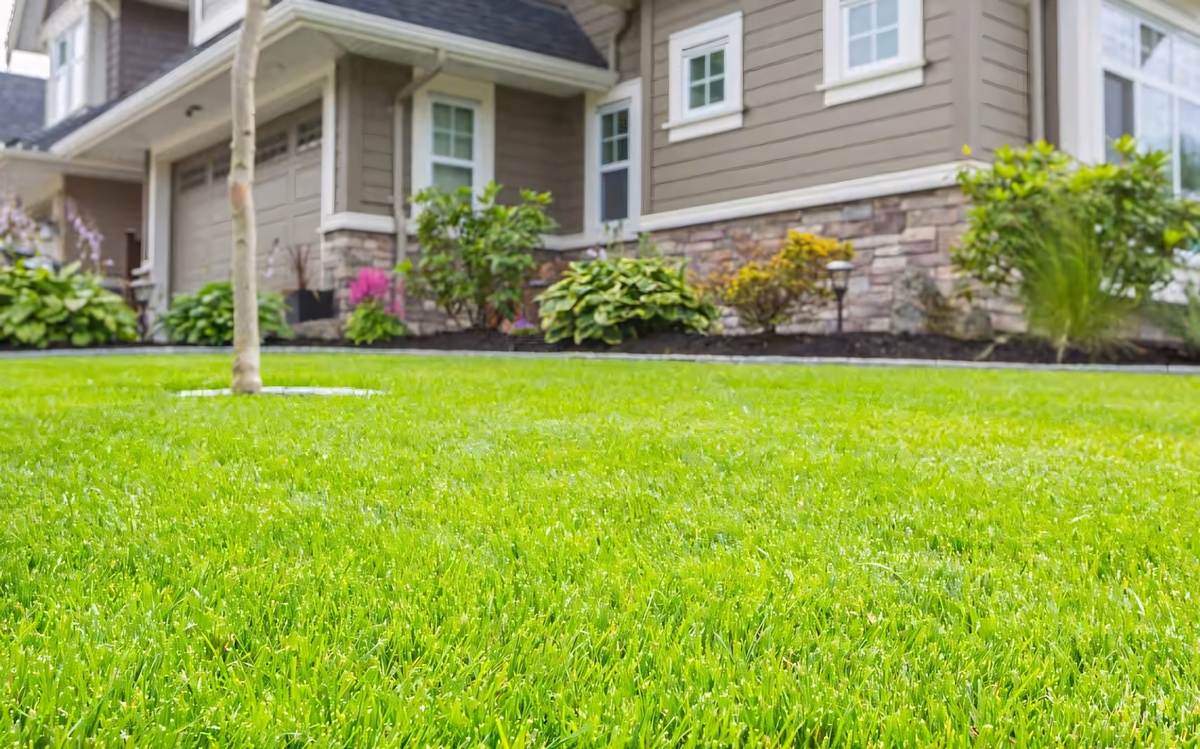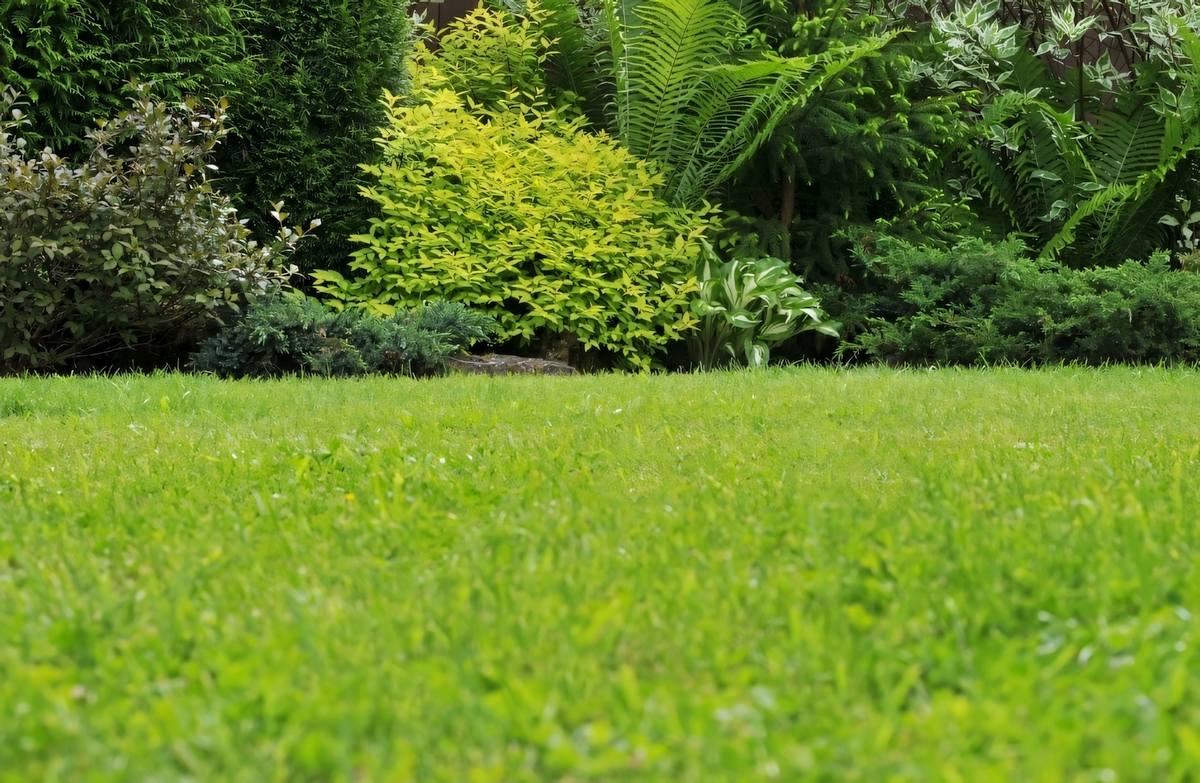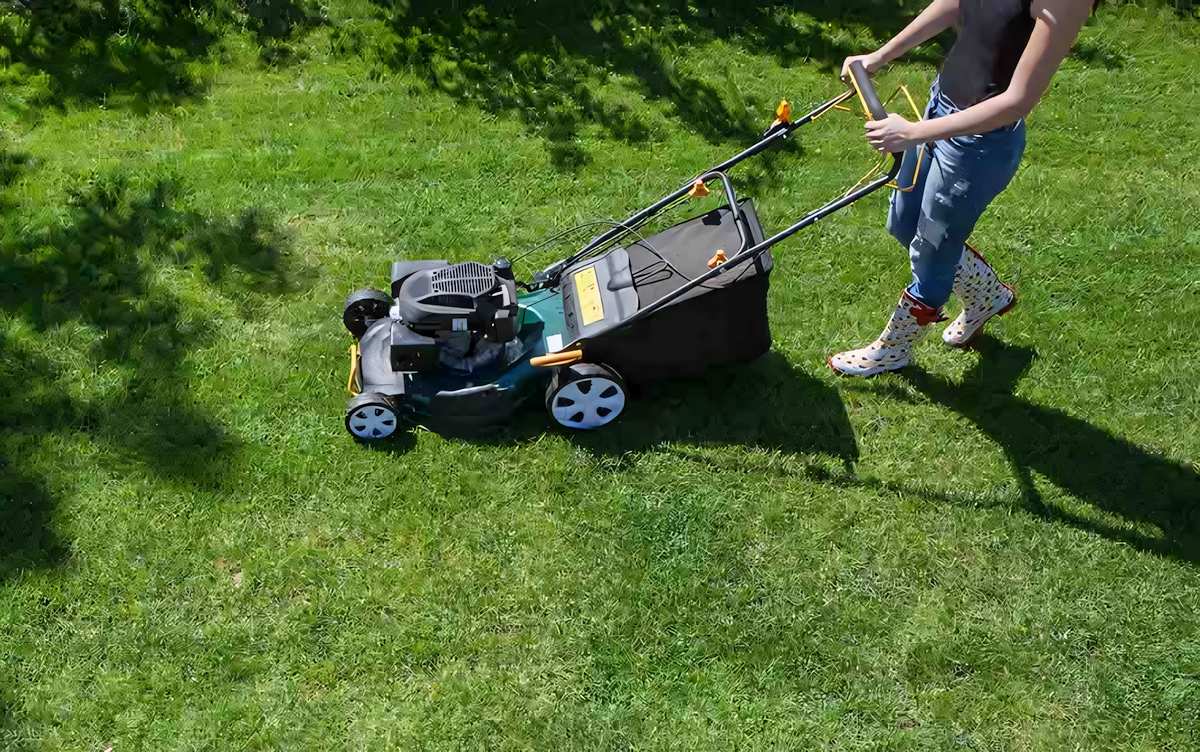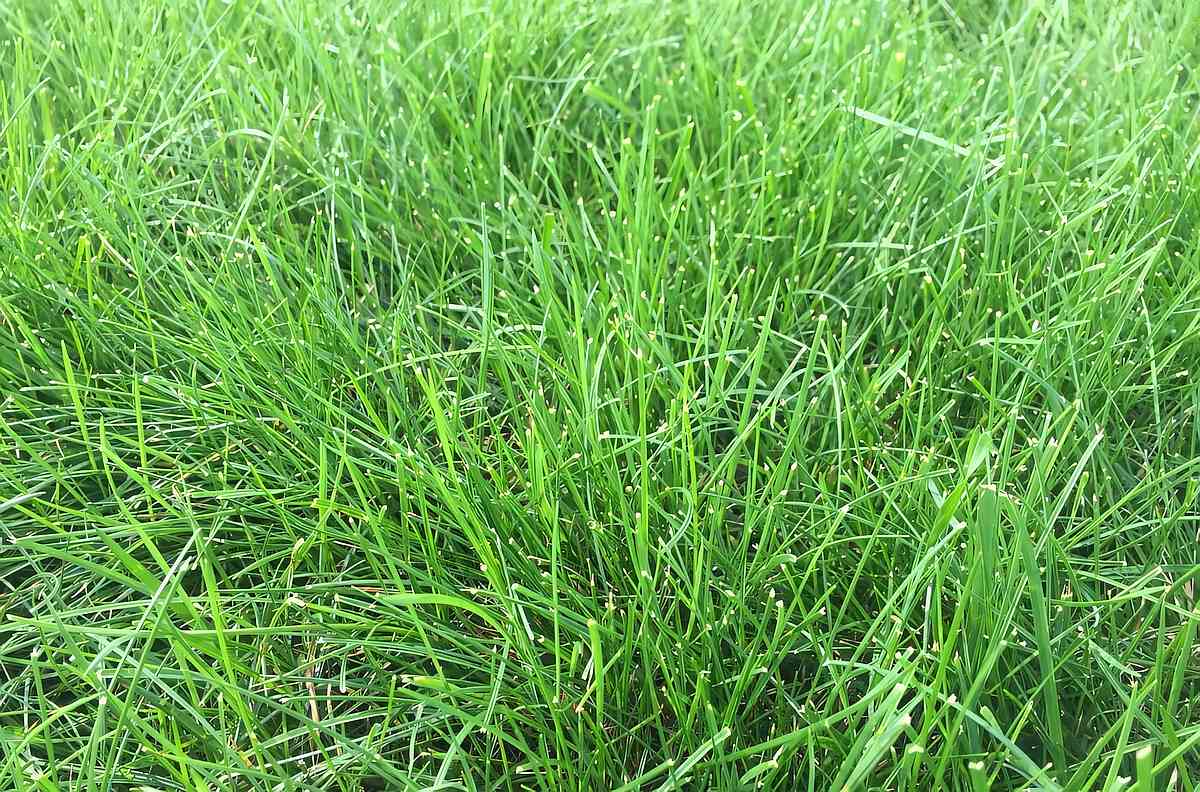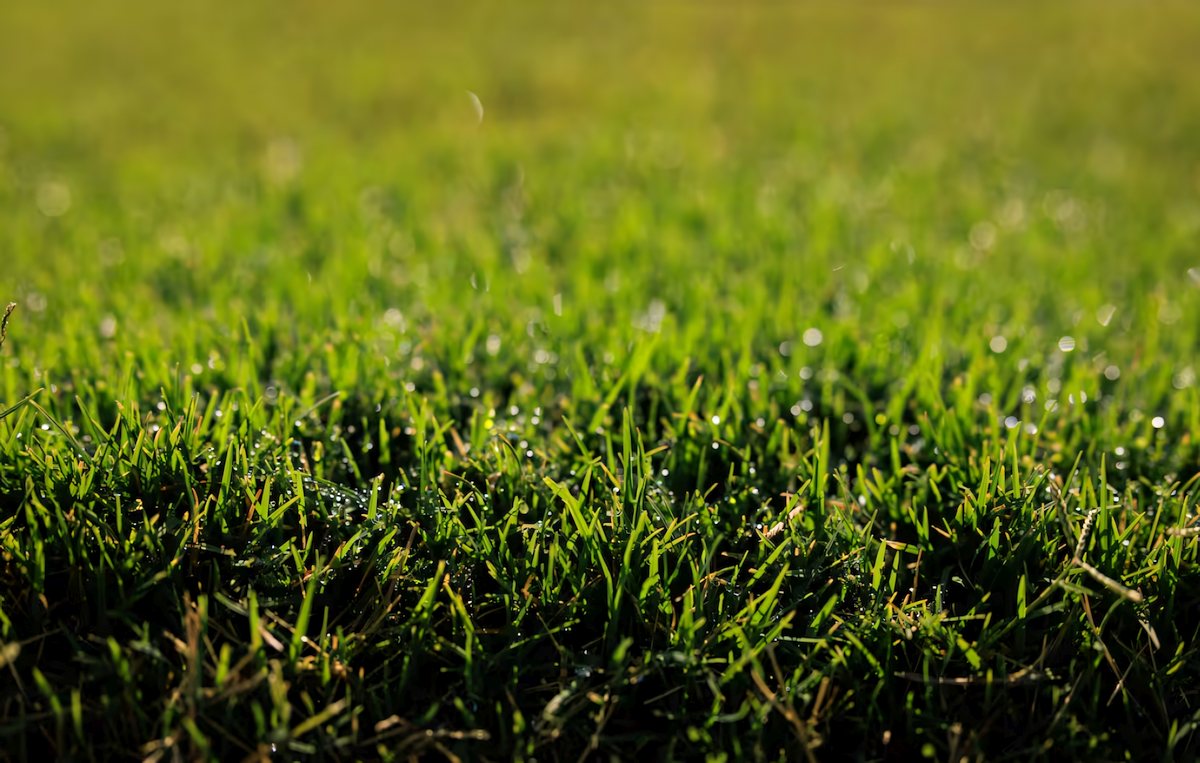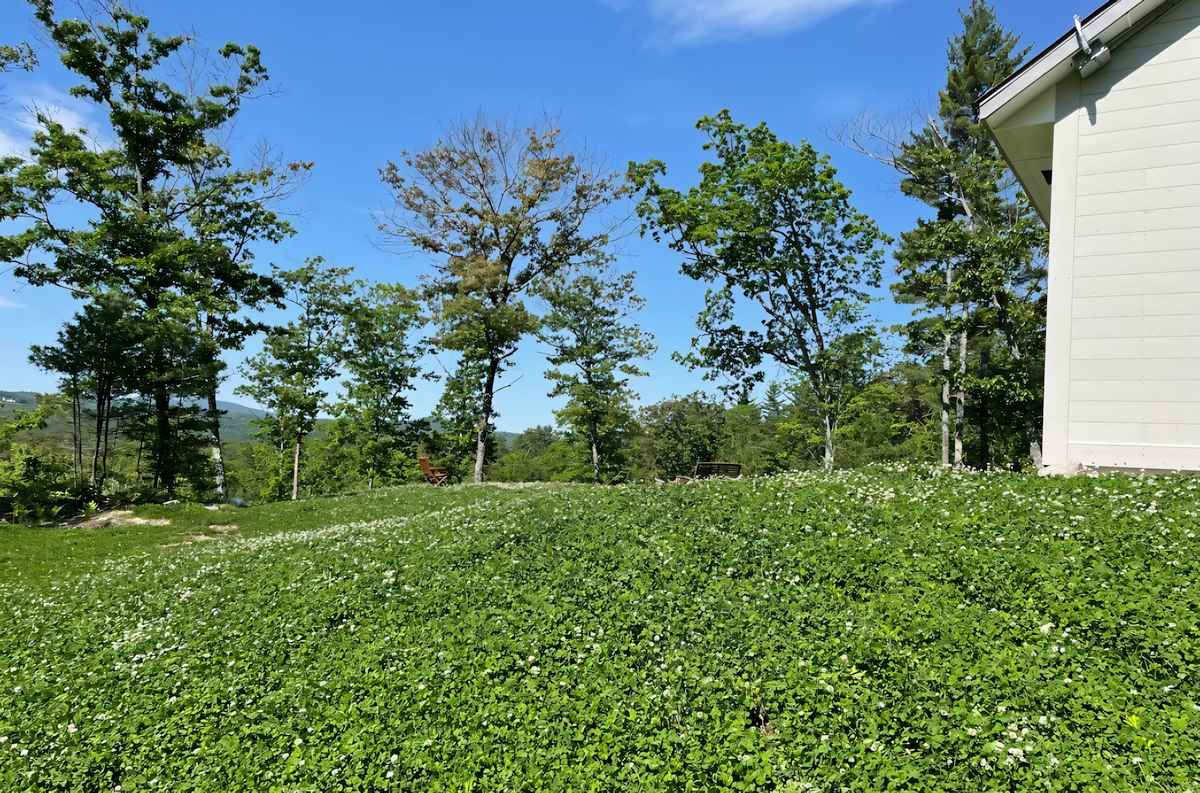If you’re weighing up your options for a new lawn, it can be quite a task to decide on the best grass for Utah.
Fortunately, you don’t have to wade through the 11,000 grass species in the world or even the hundreds of grass species available in Utah. We’ve already done the legwork and narrowed it down to four or five turfgrasses that will look and act the part in your yard.
Whether you’re re-seeding, over-seeding or starting from scratch, the handful of grass types we cover here are all well-suited to the Utah climate. The type you choose will largely depend on the local conditions in your yard, the main purpose of the grassed space, and personal preferences.
Let’s look at the best grass for Utah—plus a couple of grass alternatives that you may not yet have considered.
WHAT’S THE BEST GRASS FOR UTAH?
Depending on the purpose of the grass space and homeowner preferences, the best types of grass for Utah are cool-season grasses like Kentucky Bluegrass, Fine/Tall Fescue, and Perennial Ryegrass. Generally, you’ll find mixes available in Utah sod farms, with Kentucky Bluegrass-Ryegrass mixes or Bluegrass-Fine Fescue mixes the most popular options.
These grasses have different properties but are all naturally suited to the dry, semi-arid, and desert climate that is most prevalent in Utah. Despite the southern part of the Colorado Plateau having cool, wet summers and the north seeing generally cooler and wetter weather, the predominant aridity and cold winters are a major consideration when planting grass in most of Utah.
The best grass types are covered in detail below, as well as a couple of grass alternatives (Dutch clover and artificial turf) in case you’re not totally “sold” on the idea of a natural grass lawn.
First, however, let’s take a look at the main considerations before selecting the best grass for your Utah yard.
Looking for an alternative to grass? Get a free estimate for artificial grass from the experienced team at Rocky Mountain Turf in Salt Lake City. Contact us here.
WHAT FACTORS AFFECT THE BEST GRASS CHOICE IN UTAH?
Homeowners considering the best grass for Utah yards should consider the following factors…
Purpose of the grass
Grassed yards are used for many purposes—from simply looking immaculate to the neighbors to kids’ play areas, sports, entertaining, picnics, and around swimming pools.
Some grasses are better suited to heavy foot traffic than others and can stand up to more wear and tear. This is an important consideration before you decide on your grass type.
Best Utah grass for heavy foot traffic: Kentucky Bluegrass
Yard conditions
Grass generally needs plenty of sunshine and many types need a lot of water to grow healthily. The Utah climate satisfies the sunshine requirement but the rainfall may be challenging.
The local conditions in the yard also play an important role when choosing the best grass type. If foliage or tall buildings block the sunshine and keep areas shaded for most of the day, this can affect healthy grass growth.
Best Utah grass for shaded areas: Fine Fescue
Maintenance
Unless you love tending your lawn, mowing and watering it regularly, you’ll want a grass type that is easily established and maintained—and takes the least amount of your time possible.
U.S. homeowners spend an average of around 70 hours per year out in the garden. This could be much longer with high-maintenance lawns unless you hire lawn care services, which adds to the high cost of maintaining a lawn compared with alternative ground coverings.
Some homeowners also balk at the environmental impact of running lawnmowers, using so much water, and applying potentially toxic chemical fertilizers, herbicides, and weedkillers to grass lawns.
Read on for some grass alternatives that use fewer resources and are much easier to maintain.
Best low-maintenance Utah grass: Fine Fescue or Tall Fescue
Drought tolerance
As one of the driest states in the U.S., water usage is a key consideration when choosing the best grass for Utah lawns. Much of the state is classed as “abnormally dry” or “moderate drought”.
So, drought tolerance and low water usage should be priorities when selecting grass types—and some of the grasses covered below tick that box effectively.
Best Utah grass for drought tolerance: Tall Fescue
BEST GRASS FOR UTAH: DEEPER DIVE
Let’s take a deeper dive into what you can expect from the best grass types for Utah lawns…
Fine Fescue
Fine Fescue is a cool-season grass with a soft texture and thin, needle-like blades with a weak structure (the blades fold easily). It is considered versatile and ideal for lawns—but you may have to get accustomed to its lighter green coloration if you’re used to a more verdant grass color.
This grass type is suitable for the Utah conditions as it is drought-tolerant and doesn’t mind poor soil quality but it’s not the best choice for high-traffic areas as it will flatten easily. Fine fescue does, however, fare well in the shade or part sun.
Fine fescue is often used in combination with other grass types in Utah, such as Kentucky Bluegrass.
If you’re seeding with fine fescue, do that in the fall (between early September and mid-October) so that the grass seed germinates and can begin establishing by springtime.
Are there any downsides to fine fescue?
Fine fescue suffers in heavy foot traffic, folding, and crumpling. So, if your lawn is more a place to entertain or for the kids to play than it is decorative, consider another option. Some homeowners also find the color slightly unattractive and its slow establishment rate can be an issue for some.
Kentucky Bluegrass
Kentucky bluegrass is undoubtedly one of the best grass types for Utah, used either on its own or in combination with other grasses, like Fine Fescue and Perennial Ryegrass.
A classic cool season grass that is one of the most popular northern turfgrass species, it is widely used for Utah family lawns (with pets) because it is soft and durable. Sod farms here predominantly grow Kentucky Bluegrass-based sod.
The grass has a deep, velvety green color and excellent texture that looks fine all year round, especially in the spring and fall. It also stands up well to heavy foot traffic and recovers very well. This gives it some important advantages over fine fescue though it does not fare as well in the shade and doesn’t appreciate drought.
Seeding with Kentucky Bluegrass should be between early September and mid-October in Utah.
Are there any downsides to Kentucky Bluegrass?
Deep shade or lack of water is not a healthy condition for Kentucky Bluegrass so unless your garden receives a fair amount of sunshine and irrigation, consider an alternative option. This grass type is also more susceptible to disease and pests, making it higher maintenance than other options detailed here, with regular watering in summer, fertilizing, mowing, and pest control required.
Tall Fescue
Tall Fescue differs from Fine Fescue predominantly in that it has broader leaves and better drought and heat tolerance—but performs less well in the shade.
A hardy cold-season grass, tall fescue has a strong root system and is disease and insect-resistant. It is considered generally very low maintenance compared to most other turfgrass options and stands up well to foot traffic.
You may want to mix tall fescue and fine fescue in your lawn to get the best of both worlds. However, because fescue bunches as it grows, it’s best not to mix it with other types of grasses in Utah.
For instance, if you’re planning on seeding with tall fescue, start from scratch rather than using it to over-seed Kentucky Bluegrass lawn.
Are there any downsides to Tall Fescue?
Tall fescue is quite a coarse grass compared to Kentucky Bluegrass and because it grows in “bunches” does not mix well with other grass types. Also, this type of Utah grass should be grown from seed because it is not readily available at sod farms. You’ll likely need to over-seed in the first year at least to prevent unsightly patchiness.
Perennial Ryegrass
Perennial Ryegrass is a versatile cool-season grass that you’ll find in many areas of the country. In Utah, it pairs particularly well with Kentucky Bluegrass because of its similar dark-green coloration and thick, coarse texture.
Often, you’ll see Ryegrass blending with Kentucky Bluegrass for over-seeding Bluegrass lawns during the colder, drier months. This type of grass is also commonly found in Utah in sod blends.
Perennial Ryegrass is fast-growing and easy to establish, faring reasonably well in the shade or part-sun. It also stands up to heavy foot traffic and is pest/disease-resistant.
Don’t get the perennial variety confused with Annual Ryegrass, which is taller, lankier, and looks less like a lawn turf when it grows.
Are there any downsides to Perennial Ryegrass?
Perennial Ryegrass is less drought-tolerant than tall fescue but more tolerant than Kentucky Bluegrass. It will suffer in extreme heat too. Perennial Ryegrass also requires frequent mowing so it is not ideal if you’re looking for a low-maintenance option. In Utah, Perennial Ryegrass is best used when overseeding a Bluegrass lawn.
Bermuda Grass
Unlike most other grasses covered here, Bermuda grass is a warm-season grass and, therefore, less suitable for Utah homes—especially in the central and northern areas of the state where warm-season grasses don’t handle the winters well. It is more popular in the southern states but still, some Utah homeowners in the south of the state give it a go.
The grass is hardy enough to withstand heavy foot traffic (it’s often used on sports fields) and has the lush look in summer that many homeowners crave. Bermuda grass also exhibits good drought tolerance and is relatively resistant to pests. However, it’s relatively high maintenance.
The turf may be planted from sod, plugs or seed in the late spring or early summer.
Are there any downsides of Bermuda Grass?
Bermuda grass is not generally recommended for Utah yards because of the cold winters in most areas. Some strains can be dormant in winter to survive it, but Kentucky Bluegrass is a better option.
If you do get it to grow, Bermuda Grass is not the lowest-maintenance option, requiring regular watering, fertilizing, and mowing to flourish. This grass is also less shade-tolerant than other options covered here and is susceptible to fungal disease if over-watered and too shaded.
ARE THERE BETTER ALTERNATIVES TO GRASS IN UTAH?
Not totally “sold” on the idea of a grass lawn and want to consider a couple of alternatives?
There are other less resource and maintenance-intensive options than keeping a grass lawn in Utah—saving you time, money, and environmental impact.
In fact, Utah Water Savers even offers an incentive program with rebates for residents who remove grass and replace it with certain low-water landscaping ideas.
Let’s take a look at a couple of the best options
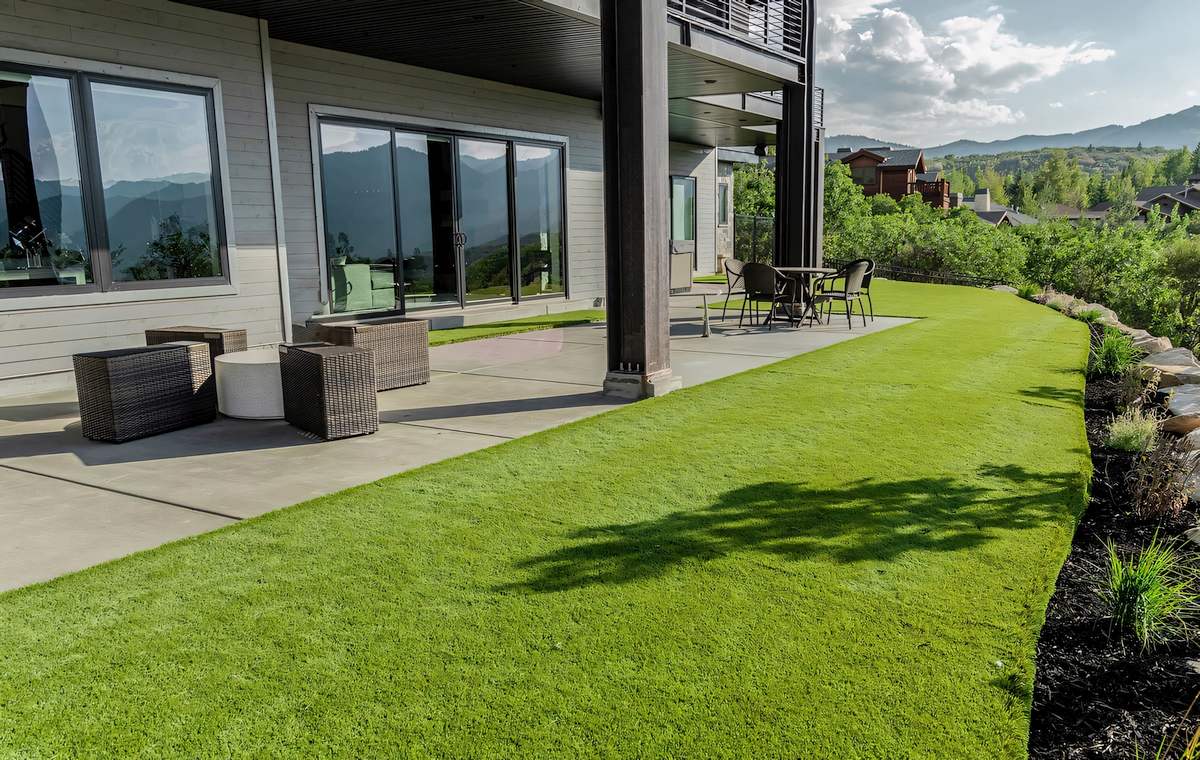
Artificial grass
An artificial grass lawn is one of the lowest-maintenance backyard options out there. The best quality synthetic turf maintains a verdant appearance all year round with no watering, mowing, fertilizing, or any of the work or expense associated with natural grass.
The main pros of artificial grass include:
- Artificial grass is ultra-low maintenance and frees up time for homeowners
- An investment in artificial turf pays for itself within 5-6 years, adding up to significant cost savings over time
- Artificial grass incurs virtually zero “lawncare” costs
- Synthetic turf is more drought and sun-tolerant than any natural grass types
- Artificial turf is also pet-friendly, children-friendly, and sports-friendly
- The best brands provide realistic artificial turf products that closely resemble the real thing
- If the right products are properly installed, artificial turf offers excellent drainage
The main downsides of artificial grass are that it costs more to install than real grass and gets hotter than natural grass.
If you’re looking for other ultra-low maintenance hardscaping options for Utah backyards, consider gravel, crushed rock or pavers, as well as organic options like mulch. Most of these can be used in combination with real or artificial grass for stunning back or front yard landscapes in Utah.

White Dutch Clover
Clover lawns are increasingly seen as a substitute for yard grass. White Dutch Clover can thrive in Utah backyards all year round, growing close to the ground and spreading out easily.
This type of clover is suitable for a variety of soil types, is very low-maintenance, requires only moderate amounts of water, and does well in full sun or shade.
Besides replacing lawns, white clover can be planted with turf grass or over-seeded on existing lawns. It should be sown in the spring and spreads quickly and thickly, blooming for several months between the spring and fall.
The main downside of White Dutch Clover is that it lacks the emerald green “carpet” appearance of real or artificial grass and, with heavy use, the clover will become damaged.
FAQs
What are the main differences between real grass and artificial grass?
They may look almost identical these days, but real grass and synthetic grass have many differences. To help decide which is the best option for your home, check out this post that compares artificial grass vs natural grass.
How long does artificial grass last?
Your artificial grass should last a minimum of 10 years and if properly installed and maintained, up to 15 or 20 years.

CONSIDERING SWITCHING TO ARTIFICIAL GRASS?
If you’re considering different backyard landscaping ideas for your Austin home, discuss your options with an artificial grass professional.







